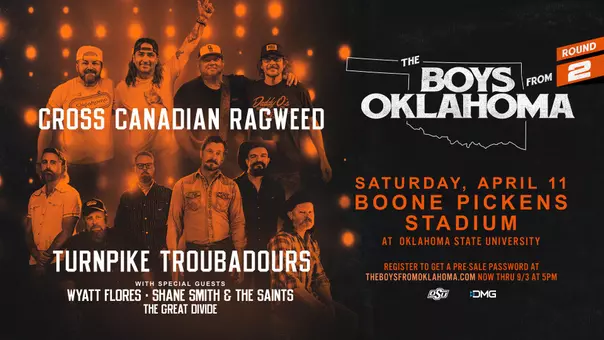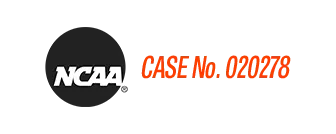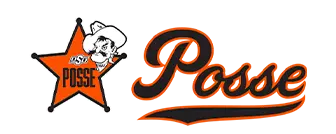Oklahoma State University Athletics
OSU Athletics Vision Plan Press Conference
February 27, 2023 | General
Oklahoma State Athletic Director Chad Weiberg
Opening Statement:
"Thank you to everyone for coming today. Today is an important and exciting day for Oklahoma State Athletics, but this is not new for OSU, this is a continuation. A continuation of the path we started on with a vision and unrivaled commitment of Boone Pickens and has continued with the amazing generosity of Karsten Solheim, Sherman Smith, Michael and Anne Greenwood, Neal Patterson, Cecil O'Brate and hundreds of other loyal supporters. Each one of these many individuals has come together to make Oklahoma State University a destination for greatness. A destination for great student-athletes who choose to come to Oklahoma State over other opportunities because they believe this is the best place to push themselves to train, to develop and to achieve something even greater than they may have thought possible. A destination for great coaches that choose to come and stay at Oklahoma State because you have everything here that is needed to build championship teams by impacting young people to become champions in all they do. A destination for alumni, fans, students and future students to be a part of the great OSU family and the sea of orange coming together on gamedays.
"Why should we believe this is possible? Because it has been done before. Taking football to the next level with Boone Pickens Stadium, raising the roof on Gallagher-Iba Arena, making it happen with O'Brate Stadium highlights a few of the many, and of course 52 NCAA national championships. For us to continue to achieve championship results, it is not the time to pause or rest on past accomplishments, but to honor those accomplishments by pushing forward and building upon what has been started. This vision plan provides a road map for the next phase of an athletics village that will be unrivaled in college sports."
On Timeline for Facilities:
"As far as the timeline, we don't have one specifically for a couple of different reasons. This will all be predicated on gathering the resources needed to do these. Regardless, it's a years-in-the-making project, even if we had all of the resources readily available now. You can see that these projects would take a lot of time to design and plan for and build. The timeline will be set by how we're able to gain the resources."
On Potential Donors:
"We have been having conversations with supporters and potential donors, and those conversations have been received well. We are not at a point where we are ready to announce any commitments to these projects yet, but we look forward to that day coming. Clearly, that is what will be necessary to make this happen as is the case with everything as we mentioned that we've done before. Whether it is the baseball stadium, the soccer complex, the training center, tennis, etc."
On Prioritizing the Projects:
"That is part of the reason that we wanted to put the whole road map out in front of the family. The Athletic Department didn't want to be the ones that were determining the priority, we didn't want to be the ones to determining the speed or the timeline. So the priorities and the timeline will all be set by our supporters and their willingness to step and help make these projects possible."
On the excitement of the announcement:
"This is exciting. I think it's a great day for the future, but it really is just a road map, this is the plan. As we have talked internally with our team, Larry Reece, Reid Sigmon and others involved, we are very aware that now is when the work begins. This is just the start, now the real work begins. Both in the fundraising and acquiring the resources, but also in the next steps of planning and construction. It will be a long process, but you've got to start somewhere, and today is the start."
On how much debt OSU is willing to take on:
"Our plan is to not take on any additional debt. We believe that our philosophy, starting with coach (Mike) Holder when he became AD, is to keep our debt service very low. We don't have a Texas-sized budget so the way we are going to be competitive is to be able to deploy as much of our budget to our programs and to basically keeping it active, not tying up significant resources without servicing debt. We will take our time on this and we will not move on any of this until the funds are there and the funds are available because we've got to keep our debt service below where it is now."
On how much of the cost will come from donors:
"A vast majority of it. We've got the $55 million stadium project underway right now, and that will be serviced by debt. The vast majority of the rest of it will not be."
On more donors coming forward after this announcement:
"What it does is makes it easier for our team and our staff to start to have those conversations. Now that it is out there, it is clear what the path forward is so now we can have those conversations, just much more open. Everyone has the same information and is working off of the same information so our expectation is not that people are going to come to us. That is not the way it works, this is hard work and it takes time. What we are hoping is that they can see and share the vision with us, they understand what it is that we are trying to accomplish, where it is we are going, why it is that we are going there and the importance of it for the future of Oklahoma State Athletics. That is the purpose of making the announcement and getting it out there. We will have one-on-one individual conversations with each of them."
On the sports medicine aspect of the Human Performance Center:
"There are a lot of details still to be worked out, but the Human Performance and Nutrition Research Institute is something that is separate from the athletic department. That is a university entity that will be housed in the Human Performance Innovation Complex along with the football center. But really, it will not take the place of anything that athletics currently does. In terms of our medicine, medical support that we provide our teams, the training support, nutrition support, what the Human Performance Institute will do will build on top of that. What they will be doing is all cutting edge and what is the next thing in this human performance space as it relates to athletics. We talk about how student-athletes are faster, stronger now than they were 10 years ago. Well, how do we continue to do that 10 years from now? But then, how do we take that research that is gained here and using athletics as part of it and take that out to the state of Oklahoma to make the lives of every citizen better."
On athletics relationship with OSU's medical center:
"What we are here for today is to talk about the building. We're talking about the building in which this will be housed. The university has previously released information about the Human Performance Institute and what that means for the university and for the people in the state of Oklahoma. But what it means for the Center for Health Sciences, for example, what it means for strength and conditioning. You can just take that onto other areas on campus. That is the whole point of the institute, which is to pull in the best areas of what we are doing on campus to be able to make that kind of impact. Again, not only for our student-athletes, for our students, but for the entire state of Oklahoma. I think the best analogy that has been used, Kyle Wray and Dr. Shrum have used this analogy, is the iPhone. When the iPhone was announced, it was announced as a widescreen iPod with touch controls, a revolutionary mobile phone and breakthrough communication device. Those were all things Apple was already doing. What made the iPhone special and unique was they brought it all together. That is what the Human Performance Center and Nutrition Research Institute is going to do for the state of Oklahoma and will be housed in this building that we're talking about today. "
On the timing of the announcement:
"I will go back to July of 2021. Right when the news broke that there was going to be a change in the Big 12 Conference. There was a lot of narrative at the time around what that looks like. There was talk about as much as 50 percent reduction in the media rights for the league. If that was going to come to fruition, who was going to stick around the Big 12 Conference for that? Were there other landing spots for members of the Big 12 Conference? I certainly was getting a lot of questions about how do we get OSU into this conference or that conference and what that looks like. Fast forward to today, some great decisions were made, starting with Commissioner Bob Bowlsby and the athletic directors and bringing in the four new members that began to stabilize it. Then, Commissioner Yormark being able to take that league to market, essentially, and getting our partners to come to the table early. And I think they spoke about what they felt like competitiveness of the Big 12 Conference moving forward was going to look like. So we did not see a reduction. In fact, we'll see an increase in our media rights agreement moving forward. But this is not the end. This is going to continue to evolve. We know that. We know conversations are going on in the Pac-12. We know some of the things that have just come out the last couple days at the ACC. So this is going to continue to evolve. And we just felt like the worst thing that we could do is feel like that we have weathered that storm and then be comfortable and then not be in a position that we need to be in when the next one comes. Since that time, we have been working on this, the last part of it. Quite frankly, part of it is we are having conversations with donors. As all of you know, the circle of conversation expands and widens, you have less of an ability to control your message. Before we got it too far out there, we felt like the time was right to go ahead and make it public, so that everybody could see it at some time."
On if this development impacts the rest of the Big 12:
"I can't speak for that as much, that's not really what I'm concerned about. What I'm most concerned about is just making sure that Oklahoma State is in the best position Oklahoma State can be in to continue to compete. And we have done a really, really good job about that. The reason we are able to talk about any of this is because of the support that came before us, as the video said. None of this happens without, first and foremost, Mr. Pickens initial commitment. That, in fact, is the whole reason we even have the space available here to build this athletic village. He inspired all of the others after that, Sherman Smith, the Greenwoods, Neal Patterson, (Cecil) O'Brate, just on and on. That has set us up in a really good position. In fact, we won our 92nd Big 12 championship with the women's indoor track team, just this past weekend. That puts us, since the start of the Big 12 Conference, as having the second-most Big 12 championships in the league, with only Texas having more. That is where we want to be, and that is what this is all about, continuing to put our programs in a position to compete at the top of the Big 12 Conference and compete for national championships.
I will use Dave Smith as an example, I think he has done a remarkable job with our programs, our women finished first and beat the No. 1-ranked Longhorns to win the Big 12 championship, and our men came in second. What makes it the most remarkable is he has done that without an indoor facility. We have nothing like that for them to train in. We are the only Big 12 school that has nothing for them to train in or compete in. We are going to elevate that, that is the plan and I am excited to see what they can do with our programs once we have that."
On if the donors' first thoughts were positive:
"You're exactly right, that was the feedback that I was looking for in those conversations. 'Is this the right time? Is this the right vision? Do we put it out there all at once?' I think all of that resonated really well with them, and it was unanimous. The feedback that I got from them, that no, now is the time, and this is the way to do it. So yes feel really good about that."
On if there's going to be an order with the new developments/projects:
"I think that most donors, they have their passions, to the degree that any of this aligns with any passions they have is what we are trying to capture. Their hard-earned money, they do not have these resources by accident, right? They have worked really hard to be able to do these kind of things, and we want them, at the end of the day, to feel really, really good about what they are investing in and what kind of return on that they are going to get. We will let them lead us to where they want to go, where they feel passionate about and their support. The good thing about this is that we have got something in this plan that impacts every single one of our programs and every single one of our student-athletes. Some of those are more obvious than others, the softball facility, the indoor track, football, basketball, wrestling, etc. But some of the domino effect that this is going to create is going to have a tremendously positive impact on all the rest of our programs and our student-athletes.
Once football moves into the new Human Performance Innovation Complex and Football Center, that opens up room in the west stadium center. What we know that is our student-athletes come in here almost every day for training table. They come in here for Orange Power Studios and the creativity they do with that. Our plan will be to move the Academic Center, build a new Academic Center in here (west end zone), we will move our mental health and counseling services in here, we will move our student-athlete leadership development services in here. Which, by the way, those are two programs that we never even had five years ago. The world has changed and is changing. The west end zone gives us the ability to grow into that space and provide those services, for all of our student-athletes. It is a tremendous opportunity for us. We don't know the name of it yet, but we envision this being a one-stop student-athlete success center for all of our student-athletes. That is just one example of the way that this is going to impact all every student-athlete so I think it just depends on what the passion is of our donors."
On if the Student Success Center would need to be moved before the basketball facility is integrated in this plan:
"It is not necessarily where the current academic center is. The academic center shares a wall with the current auxiliary gym. But it's not directly tied to it."
On if the institute and football offices are a combined effort financially:
"Financially, it is a combined effort. So there will be – there's the football side of it, will have to be funded by athletic gifts, private gifts to athletics. So all of football is into it. Now, there will clearly have to be things in this building that remain for game days. But the reality is this football team is on this field seven days a year basically. They're on those fields across the street every other day of the year. So it does make a lot of sense to put them in the location that they lived day-to-day. You have to have a locker room for game day, training room for game day, those kinds of things – so that will remain here in the building. But it will also be able to be used by other student athletes and other programs at that point. So it gives us an opportunity there. But what I think we have the ability to do with the Human Performance Innovation Complex and Football Center is we will have obviously the institute parts of that, and we'll have football parts of that – and there will be some efficiencies that we can gain by sharing some space, some of the space in between. It's just a tremendous opportunity and great use of resources."
On conversations with coaches:
"We've had initial conversations with all of the coaches about this, but those will be ongoing. Again, this is sort of the vision. We haven't gotten down to all of the details yet, that's still work to be done. Kind of coming up with the main things we want to see in it. And, as you can imagine, it ranges all over the board depending on the coach and the support. So using Kenny, Coach Gajewski, as an example, we clearly have an issue at the current stadium where we don't have enough room for the fans. We've got a lot more demand for our tickets there than we have space. But at the same time, we love how that feels there, and we don't want to lose that feel and that electricity that is there. So how do you capture both of those by expanding but not losing the feel? I think for Kenny and all of our coaches, the fan aspect is important, but probably more important is what are the training and development spaces that are in these facilities. What are we providing for our student athletes that come in here to get better and to become the student athletes that they want to be, and to be as good as they want to be, or be even better than they may think they could be? So that may be a tremendous part of our discussions moving forward, making sure we have first-class, world-class training and development pieces of these projects."
On if any aspects of the project will prioritized:
"No, I don't think so. I don't think we'll try and move anything to the top of the list at this point. All of these are important and some of them may go on concurrently. I don't know how that is going to play out. But that will be determined by available resources."
On if Oklahoma State took inspiration from any other schools on this plan:
"We definitely pay attention. We travel a lot when we go to other schools. So there's the opportunity to compare, and we certainly are always doing that. What are the things we like about this, don't like about that, and try to mold those together to fit what we want to do here at Oklahoma State. We also have architects. That's a big part of what they do – sports architects – bring those ideas to us. At the end of the day, what we want is the best. So we're going to try and learn what everyone is doing and take the next step."














